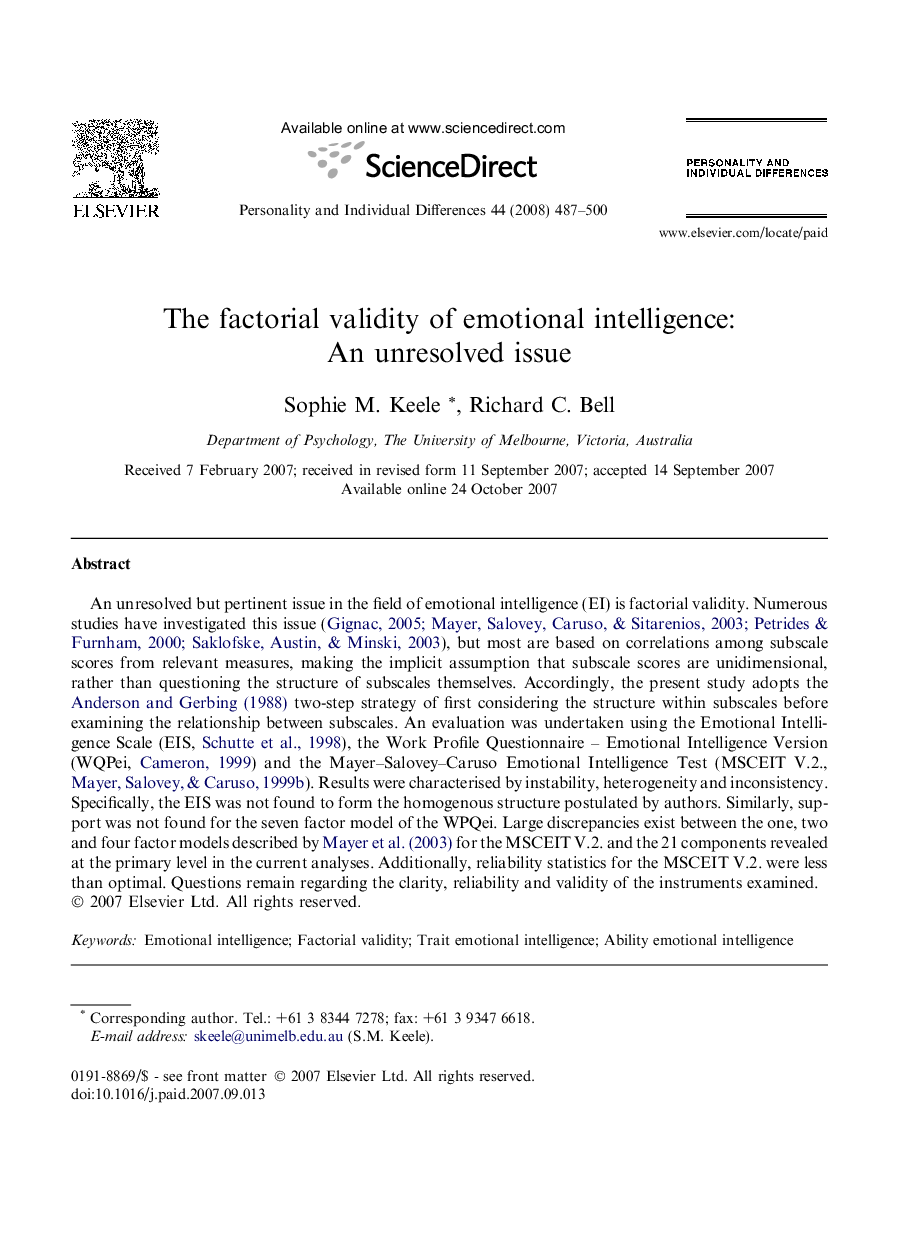| Article ID | Journal | Published Year | Pages | File Type |
|---|---|---|---|---|
| 892872 | Personality and Individual Differences | 2008 | 14 Pages |
An unresolved but pertinent issue in the field of emotional intelligence (EI) is factorial validity. Numerous studies have investigated this issue (Gignac, 2005, Mayer et al., 2003, Petrides and Furnham, 2000 and Saklofske et al., 2003), but most are based on correlations among subscale scores from relevant measures, making the implicit assumption that subscale scores are unidimensional, rather than questioning the structure of subscales themselves. Accordingly, the present study adopts the Anderson and Gerbing (1988) two-step strategy of first considering the structure within subscales before examining the relationship between subscales. An evaluation was undertaken using the Emotional Intelligence Scale (EIS, Schutte et al., 1998), the Work Profile Questionnaire – Emotional Intelligence Version (WQPei, Cameron, 1999) and the Mayer–Salovey–Caruso Emotional Intelligence Test (MSCEIT V.2., Mayer, Salovey, & Caruso, 1999b). Results were characterised by instability, heterogeneity and inconsistency. Specifically, the EIS was not found to form the homogenous structure postulated by authors. Similarly, support was not found for the seven factor model of the WPQei. Large discrepancies exist between the one, two and four factor models described by Mayer et al. (2003) for the MSCEIT V.2. and the 21 components revealed at the primary level in the current analyses. Additionally, reliability statistics for the MSCEIT V.2. were less than optimal. Questions remain regarding the clarity, reliability and validity of the instruments examined.
